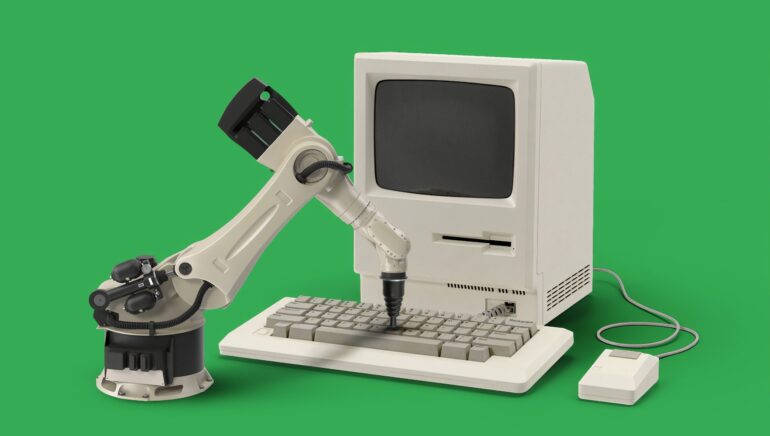You need a mixture of history, economics and politics to hear through the everyday noise and recognize the big trends of the future. In our new series, Erste AM’s investment team identifies those factors that will determine the next 10 years.
First Text: the next 10 years
Digitalization and its impact on economy or how to invest in the world of Industry 4.0
Industry 4.0 [i]is a term first time used by Klaus Schwab, head of World Economic Forum, during annual summit in 2015. Represents a combination of traditional manufacturing industrial platforms and practices using smart technologies. Primarily focuses is on Large scale machine to machine (M2M) communication and Internet of things.
Fourth industrial revolution, as it refers to, uses Internet of things and Cyber – physical systems such as sensor to collect vast amount of data that can be used by manufacturers and producers to analyze an and improve their work.
KPMG has estimated that the components market of industry 4.0 are estimated to $4 trillion in 2020. What we can expect over next decade is
- Impact on business, anticipated disruption on traditional business, new technologies create new way of serving existing needs
- Impact on government, enable citizens to engage with government, voice opinions, coordinate effort
- Impact on people, replacement rather than displacement, it will affect identity of people, notions of ownership, consumption patterns.
ECB survey on Digitalization and its impact on the economy[ii] describes digitalization as a technology/supply shock which affects economy aggregates, notably competition, productivity and employment. Outcome from 74 leading non-financial companies representing 3.7% of EU output and 1.7% employment is clear.
Big data and Cloud computing employ more than 80% of companies. There is positive impact on sales. Digitalization gives price flexibility, ability to differentiate prices across markets. Easier sharing of knowledge in/out of a company and more efficient production will increase productivity.
Surprisingly, effect on employment is rather on replacement not displacement of people with strong focus on development of critical skills.
Picture: Take-up of digital technologies

Source: Elding, Morris: Digitalisation and its impact on the economy: insights from a survey of large companies
Moreover, in order to take reasonable action (buy or sell a company), we should analyze in detail obstacles of digitalization. Once a company is open to communicate difficulties to implement digital technologies it is a proof of digitalization progress within a company.
Necessity to adjust company organization, recruiting of highly skilled staffs, troubles to align with regulation due to changes taken could be a sign of future profitability. Vague reporting of digitalization and simple reporting on increased R&D cost might be sign of zombie company that do not have a positive prospect.
Picture: Obstacles to the adoption of digital technologies

Source: Elding, Morris: Digitalisation and its impact on the economy: insights from a survey of large companies
I intentionally avoid FinTech and BigTech companies which are on one hand in the focus of investment community and public, on the other hand they are only a part of the story. Many times, progress in digitalization is roughly measured by market capitalization of FAANG stock, that is misleading.
Special case of digitalization represents crypto-currencies. There is evidence that Bitcoin[iii] is probably mean of payment for illegal activities and not complaint with ESG criteria. But blockchain as a distributed ledger technology is very promising in the future due to ability to digitalize of real assets.
Key takeways:
-
Industry 4.0 will provide better efficiency for companies in all sectors of economy and successful companies will pay higher returns on investments.
-
Fintech and Bigtech companies are only part of the Industry 4.0 story.
-
We must define metrics to identify winners. The proof of success is not in positive headlines, the proof is in ability of the company to change orgchart if necessary, hiring skilled people, fighting against regulator, because there is no gain without a pain.
[i] https://www.weforum.org/agenda/2016/01/the-fourth-industrial-revolution-what-it-means-and-how-to-respond/
[ii] Elding, Morris: Digitalisation and its impact on the economy: insights from a survey of large companies
[iii] Foley,Karlsen, Putniņš: Sex, Drugs, and Bitcoin: How Much Illegal Activity Is Financed Through Cryptocurrencies?
More in our dossier: https://blog.en.erste-am.com/dossier/longterm-outlook/
Legal note:
Prognoses are no reliable indicator for future performance.


